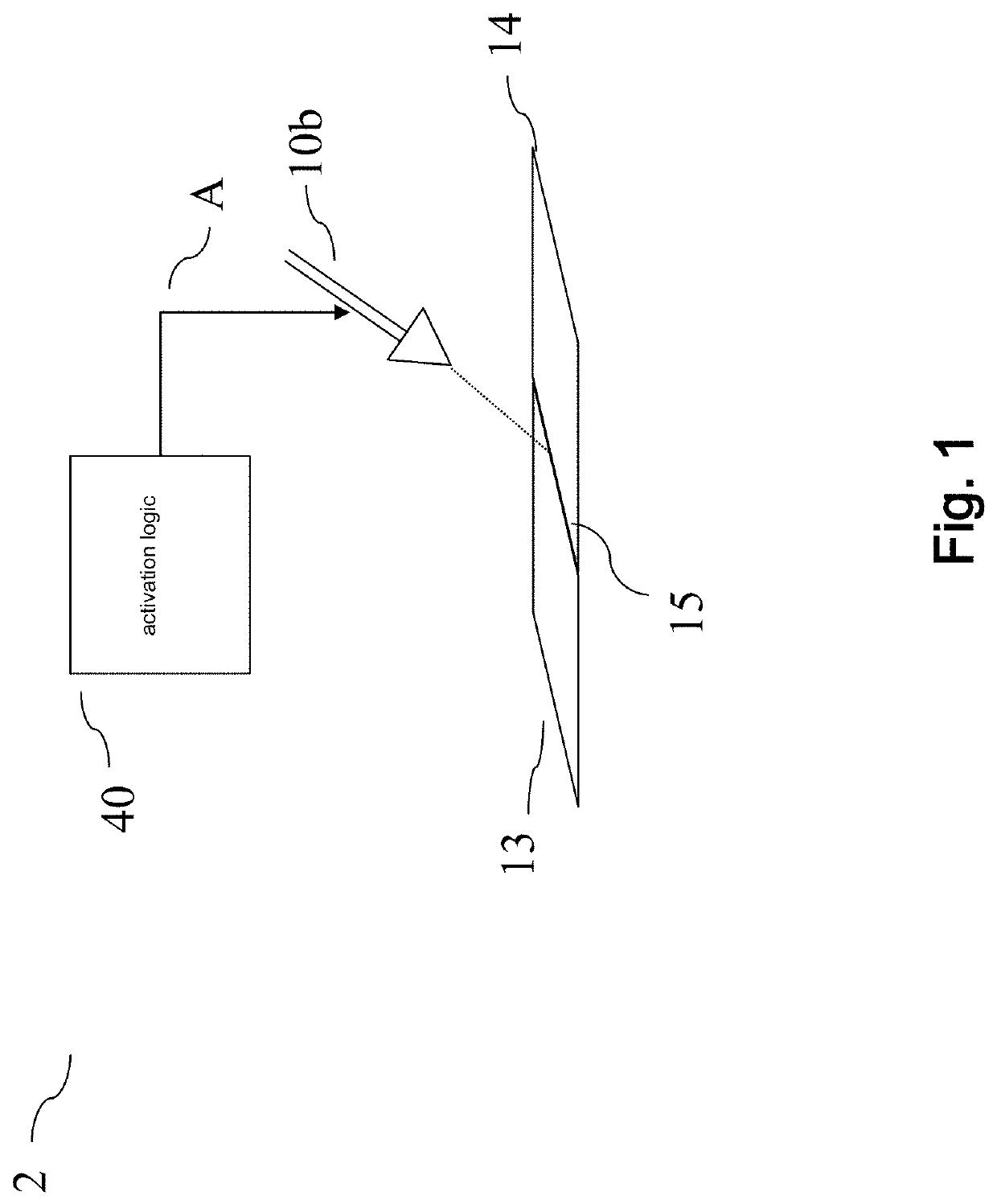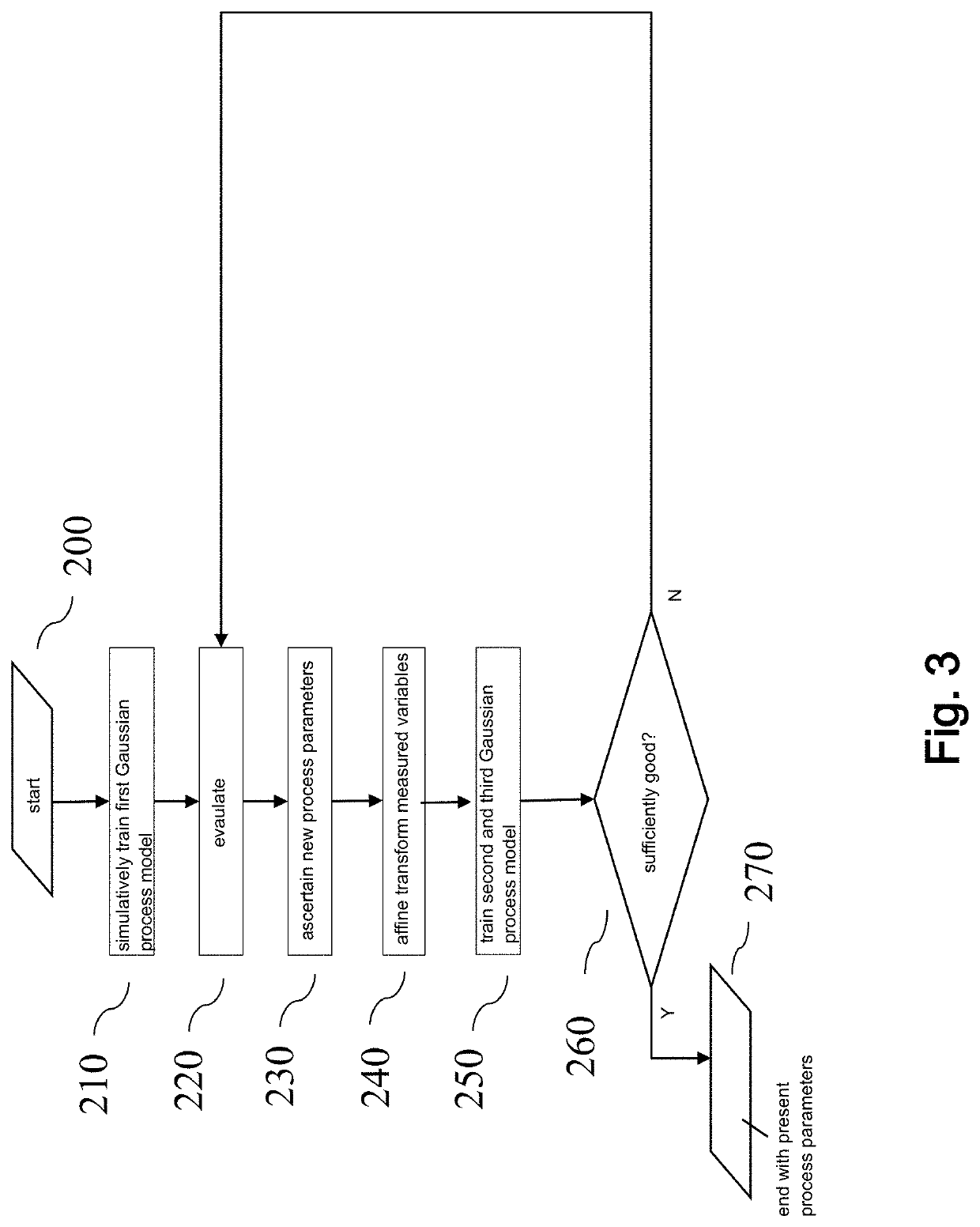Method and device for ascertaining the energy input of laser welding using artificial intelligence
- Summary
- Abstract
- Description
- Claims
- Application Information
AI Technical Summary
Benefits of technology
Problems solved by technology
Method used
Image
Examples
Embodiment Construction
[0049]FIG. 1 schematically shows a structure of a laser welding machine 2. An activation signal A is provided by an activation logic 40 to activate a laser 10b. The laser beam strikes two material pieces 13, 14 where it generates a weld seam 15.
[0050]FIG. 2 schematically shows a structure of a test stand 3 for ascertaining optimal process parameters x. Present process parameters x are provided by a parameter memory P via an output interface 4 of laser welding machine 2. This machine carries out laser welding as a function of these provided process parameters x. Sensors 30 ascertain sensor variables S, which characterize the result of the laser welding. These sensor variables S are provided as quality properties yexp to a machine learning block 60 via an input interface 50.
[0051]In the exemplary embodiment, machine learning block 60 includes a data-based model, which is trained as a function of provided quality properties yexp, as illustrated in FIG. 4 and FIG. 5.
[0052]Varied process...
PUM
| Property | Measurement | Unit |
|---|---|---|
| Uncertainty principle | aaaaa | aaaaa |
| Energy | aaaaa | aaaaa |
Abstract
Description
Claims
Application Information
 Login to View More
Login to View More - R&D
- Intellectual Property
- Life Sciences
- Materials
- Tech Scout
- Unparalleled Data Quality
- Higher Quality Content
- 60% Fewer Hallucinations
Browse by: Latest US Patents, China's latest patents, Technical Efficacy Thesaurus, Application Domain, Technology Topic, Popular Technical Reports.
© 2025 PatSnap. All rights reserved.Legal|Privacy policy|Modern Slavery Act Transparency Statement|Sitemap|About US| Contact US: help@patsnap.com



